Preservation
Preservation at CUL
The Columbia University Libraries is committed to the long-term preservation of its collections in a usable form. Selection for preservation is governed by policies which state that whenever possible within reasonable financial limits, the original item will be repaired or rebound, and returned to the shelf. Decisions on conservation treatment and reformatting is carried out by the conservators in consultation with curators.
For more information see the Preservation Policy and Preservation Division Handbook.
This website documents issues related to preserving ReCAP collections. Its purpose is to:
- Share pre-transfer and post-circulation guidelines for fragile and damaged items
- Train staff to confidently make condition-needs assessment
- Create clear, straightforward workflow for staff to route material
- Establish uniform practice across departmental documentation
- Maintain consistent data encoding of ReCAP collections
Preservation Treatment for ReCAP Materials
At the time of transfer to ReCAP, fragile and damaged books get basic-level physical treatment and have encoding added to CLIO records. Processing collections for transfer is a large-scale procedure. The large volume needing preservation attention inhibits full treatment except for special cases. Items are identified as "fragile" or "damaged" and secured by CUL staff. All existing, suitable housings are maintained.
Fragile and damaged items are considered In Library use only at the point of circulation. Patrons receive email notification that the request has arrived and is In Library use only (i.e. non-circulating).
Upon return from circulation or in-library use, the item is routed for preservation according to routine procedures, DCMM-904.
Fragile should be considered an umbrella term used only for ReCAP processing. CUL Preservation uses different language to describe books in need of treatment. Instead of fragile, they use the terms damaged and brittle. Damaged books pass the 4-fold brittle paper test and may be rebound or repaired. Brittle items do not pass the 4-fold test and must receive alternate treatment.
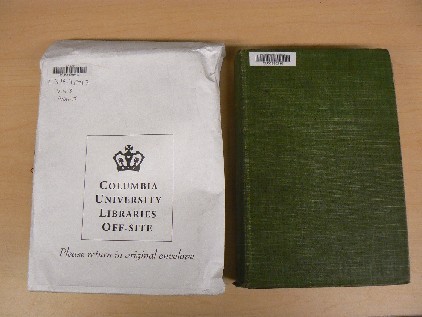
- Provisional preservation treatment has been performed on 5% of CUL collections at ReCAP
- Time and resources are not sufficient to provide full treatment for all volumes
- The 4-fold test is never performed during ReCAP processing
- The most common methods of provisional treatment are 1) Tyvek envelopes and 2) cotton tape
- See ReCAP Supplies website for complete list of materials
- CUL staff adds record keeping encoding to CLIO item records receiving treatment
- Fragile volumes receive text input in the Note field and are assigned Damaged item status
- Fragile material processed in NOTIS (pre- July 2003) have text in the Note field but do not have Damaged item status.
- An item with Damaged item status may require a supervisor override for patron circulation (according to client account privileges of staffperson)
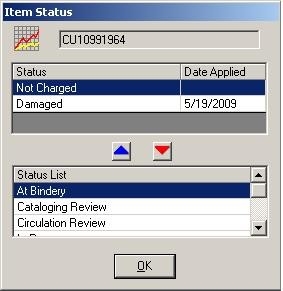 <em>Damaged</em> item status in CLIO item record
<em>Damaged</em> item status in CLIO item record
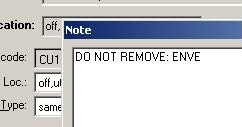 Note field content in CLIO item record
Note field content in CLIO item record
Damaged vs. Brittle
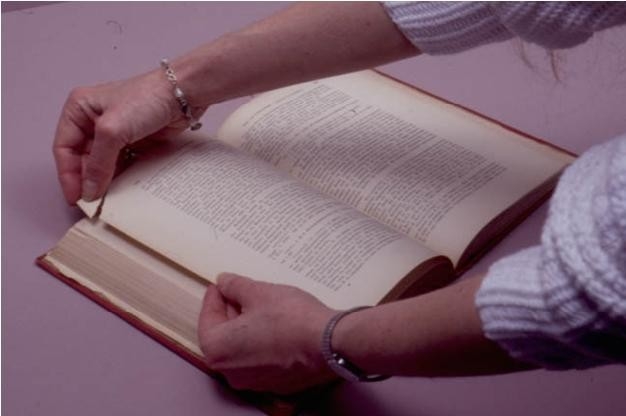
- Preservation and Collection Maintenance distinguish between damaged and brittle material
- Damaged books pass the 4-fold brittle paper test and may be rebound or repaired
- Brittle items do not pass the 4-fold test and must receive alternate treatment
- During ReCAP processing staff do not distinguish these two categories
- Once an item is retrieved from ReCAP it will be re-evaluated and processed according to DCMM-904
When to Identify and Process Fragile Material
During standard handling of ReCAP materials there are three opportunites for an item to receive preservation treatment:
- Processing for transfer
- Circulated fragile or damaged
- Circulated books not previously identified as fragile or damaged
When an item (monograph or serial) circulates from Offsite it should be examined to see if it needs first-time binding, repair, rebinding, reformatting, or replacement according to the same criteria used for materials shelved on campus. This includes items housed in tyvek envelopes.
Follow guidelines in DCMM-904: Routing Offsite Volumes for Binding, Repair, Rebinding, Replacement, Microfilming, or Photocopy.
Department libraries are not individually billed for preservation treatment of ReCAP returns. They should have no budgetary qualms about routing ReCAP returns to Preservation. For in-house repair there are is no charge, reformatting is billed to a central account and rebinding is billed by division.
Collection Maintenance staff at Butler Library have guidelines in place to process circulated ReCAP books not previously identified as fragile or damaged that have been reproduced (filmed, photocopy, etc.).
Examples
Mold on Delivery Cart
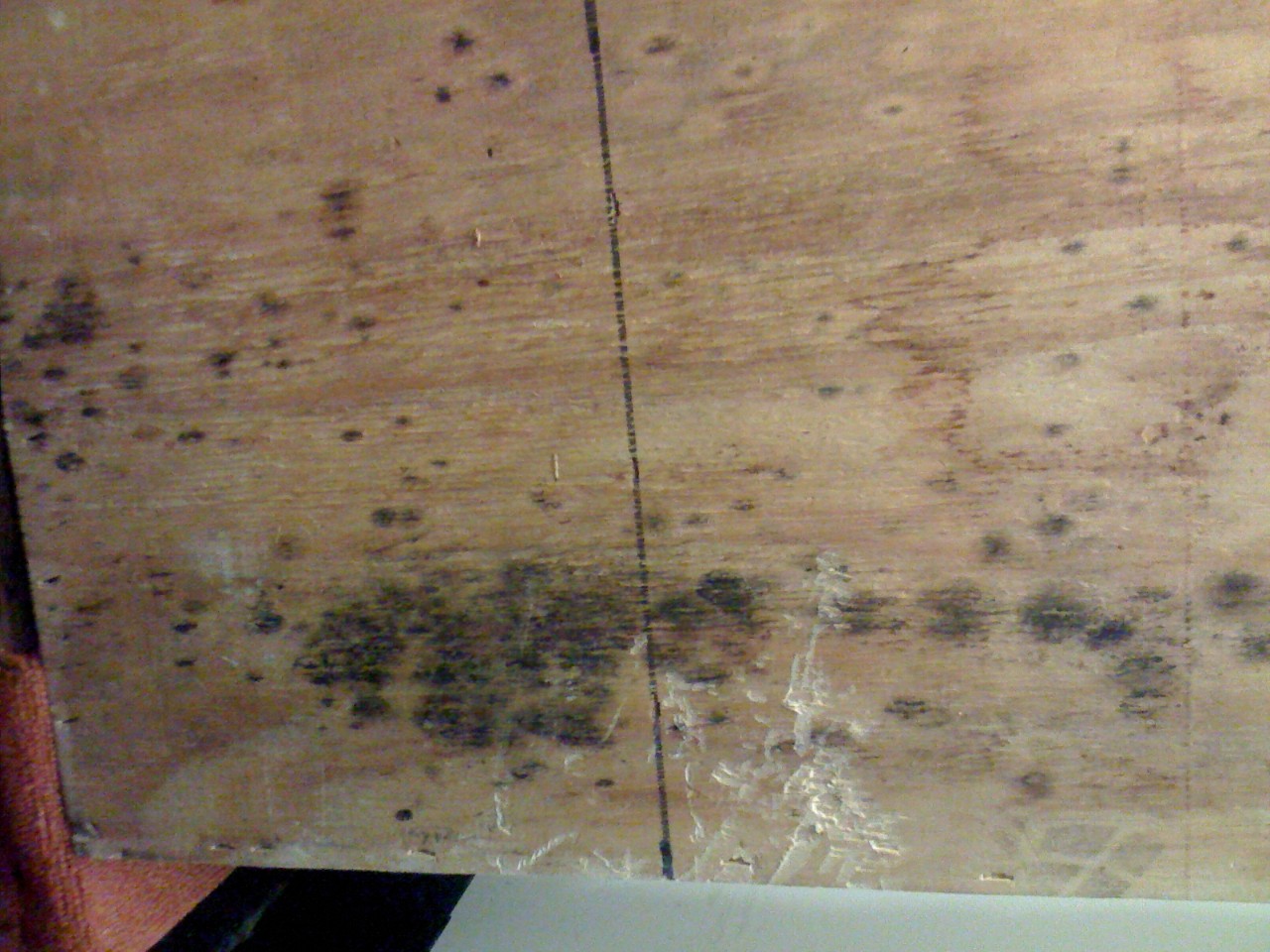
March 2010
Several wooden carts used for routine ReCAP transfers and deliveries had significant mold growth. First action was to encapsulate the cart using plastic wrap. Moving company was immediately alerted and carts were evacuated. Likely cause was a bad batch of plywood during construction or carts exposed to moisture in storage.
CUL department staff alerted ReCAP Coordinator. Preservation staff were consulted to diagnose and suggest quick, practical solution.
Gouge to Document Box
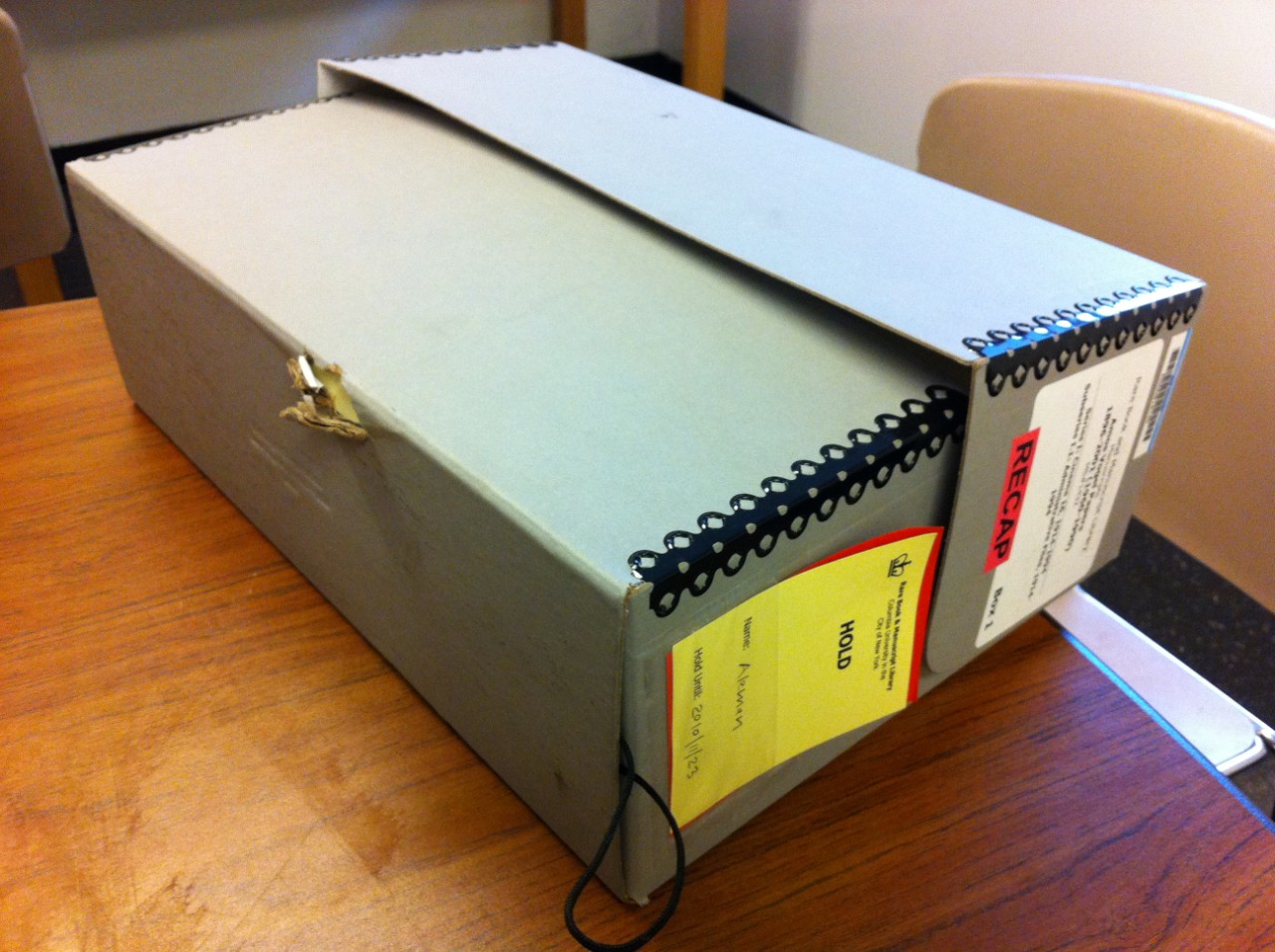
November 2010
Damage to document box at unknown time. Resulted from careless handling at unknown stage. Material inside had no damage. The breach poses no immediate threat to documents.
Book Taped to Document Box
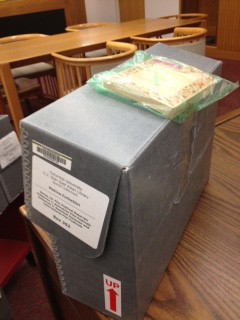
February 2013
Casual packing of book and box. Material inside had no damage. The damage is superficial to the container.
Related Documentation
- Preservation Division Handbook
- Fragile Processing Guidelines
- DCMM-904 : Routing Offsite Volumes for Repair, Rebinding, Replacement, Microfilming, or Photocopy
- Barcode Placement : Where to apply barcodes on different types of library material
- Smart Barcoding : Definition and history of use at CUL
Bibliography
Cutshaw, Oliver. (2002) 'Helpful Hints for the Safe Transport of Library Materials', Archival Products NEWS, 9:3, pp. 4-6.
Harvard College. (2007) 'Conservation Guidelines: Transfer of Library Materials to the Harvard Depository', Available online: http://preserve.harvard.edu/guidelines/hdtransfer.pdf
Teper, Jennifer Hain. (2004) 'Stabilizing Materials in Preparation for Transfer to Remote Storage: Managing Workflow and Costs', Archival Products NEWS, 11:4, pp.1-4
Teper, Jennifer Hain and Atkins, Stephanie S. (2004) 'Time and Cost Analysis of Preparing and Processing Materials for Off-Site Shelving at the University of Illinois at Urbana-Champaign Library', Collection Management, 28:4, pp.43-65

ReCAP User Inquiry Alias: recap@library.columbia.edu
Supervisor, ReCAP Access Services: Jennifer Loubriel
Phone: (212) 854-3542
E-mail: jll2223@columbia.edu